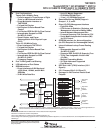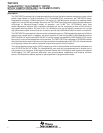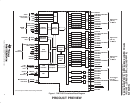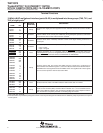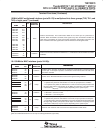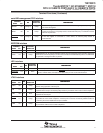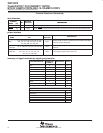
TNETX3270
ThunderSWITCH 24/3 ETHERNET SWITCH
WITH 24 10-MBIT/S PORTS AND 3 10-/100-MBIT/S PORTS
SPWS043B – NOVEMBER 1997 – REVISED APRIL 1999
2
POST OFFICE BOX 655303 • DALLAS, TEXAS 75265
description
The TNETX3270 provides highly integrated switching solutions that allow network designers to lower overall
system costs. Based on Texas Instruments (TI) ThunderSWITCH architecture, the TNETX3270 design
integrates 24 full-duplex 10-Mbit/s ports and 3 full-duplex 10-/100-Mbit/s ports, as well as an address-lookup
engine, all in a single 240-pin package. All ports on the TNETX3270 are designed to support multiple addresses,
cut-through or store-and-forward modes of operation, and VLAN. The 10-/100-Mbit/s ports have
media-independent interface (MII)-compatible interfaces and can be configured to work as MII uplinks to
high-speed switching fabrics. All three of the 10-/100-Mbit/s ports can be logically combined into a single
high-performance uplink channel that can be used to provide up to 600-Mbit/s switch-to-switch connections.
The TNETX3270 incorporates an internal content-addressable memory (CAM) capable of supporting 2,048 end
stations from a single switch. In addition, the device supports 32 user-configurable VLAN-broadcast domains
(IEEE Std 802.1Q), which allows IEEE Std 802.1P priority support interoperability, IEEE Std 802.3X full-duplex
flow control, and a collision-based flow-control scheme. The TNETX3270 also integrates an EEPROM interface
that allows the device to be initialized and configured without the added expense of a CPU. All of these features
on chip greatly reduce the number of external components required to build a switch.
The internal address-lookup engine (IALE) supports up to 2K unicast/multicast and broadcast addresses and
up to 32 IEEE Std 802.1Q VLANs. For interoperability, each port can be programmed as an access port or
non-access port to recognize VLAN tags and transmit frames with VLAN tags to other systems that support
VLAN tagging. The IALE performs destination- and source-address comparisons and forwards unknown
source- and destination-address packets to ports specified via programmable masks.



